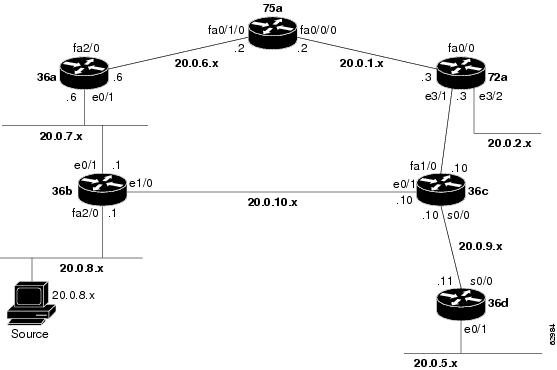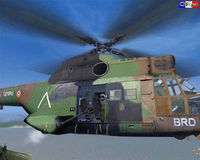FiveM server list™.
- The FreeRPG Project is an idea to create a completely free and open-source RPG game, from game engine to all the assets included with the game. It will be made with the open-source and free Torque3D game engine and will include many free and open-source assets from places such as OpenGameArt, duion.com and 3TDStudios amongst many others.
- This shows that RP n is also equivalent to the closed n-dimensional disk, D n, with antipodal points on the boundary, ∂D n = S n−1, identified. Low-dimensional examples. RP 1 is called the real projective line, which is topologically equivalent to a circle. RP 2 is called the real projective plane. This space cannot be embedded in R 3.
- An RPG Role-Playing Game is a special file format by Hamster Republic Publications and should only be edited and saved with the appropriate software. How to solve problems with RPG files Associate the RPG file extension with the correct application.
Make nice looking RPG maps easily.
RPG Map is a tabletop oriented map editor
with the “keep it clean & simple“ philosophy in mind.
About
RPG Map is a tool I’ve built to make maps for my tabletop RPG sessions, with my friends. It’s born from the fact that most existing tools were either looking bad or were simply overly complex to use.
My approach is to make an easy to use tool to create beautiful maps quickly.
You can still access the old Flash-based version (source code available on GitHub)
Commercial use

RPG Map II is completely free to use. All the content you create with it can be used any way you want, including in commercial products.
Features
- Full HTML5 support, Windows version on Itch.io
- Roll20 and Fantasy Grounds exports
- Import your own images or icons
- Fully customizable colors
- Import maps generated by One Page Dungeon (from Watabou)
- Support for special walls, such as caverns, diagonals, etc.
- Ground textures
- Ray-casted lighting & fog
- Multiple skins and many customizable colors
- Texts, numbered elements with automatic legend block generation, text bubbles…
- Icons
- Enemies
- User friendly UI
- Pay what you want, including free!
In mathematics, real projective space, or RPn or , is the topological space of lines passing through the origin 0 in Rn+1. It is a compact, smooth manifold of dimension n, and is a special case Gr(1, Rn+1) of a Grassmannian space.
Basic properties[edit]
Construction[edit]
As with all projective spaces, RPn is formed by taking the quotient of Rn+1 {0} under the equivalence relationx ∼ λx for all real numbers λ ≠ 0. For all x in Rn+1 {0} one can always find a λ such that λx has norm 1. There are precisely two such λ differing by sign.
Thus RPn can also be formed by identifying antipodal points of the unit n-sphere, Sn, in Rn+1.
One can further restrict to the upper hemisphere of Sn and merely identify antipodal points on the bounding equator. This shows that RPn is also equivalent to the closed n-dimensional disk, Dn, with antipodal points on the boundary, ∂Dn = Sn−1, identified.
Low-dimensional examples[edit]
RP1 is called the real projective line, which is topologically equivalent to a circle.
RP2 is called the real projective plane. This space cannot be embedded in R3. It can however be embedded in R4 and can be immersed in R3. The questions of embeddability and immersibility for projective n-space have been well-studied.[1]
RP3 is (diffeomorphic to) SO(3), hence admits a group structure; the covering map S3 → RP3 is a map of groups Spin(3) → SO(3), where Spin(3) is a Lie group that is the universal cover of SO(3).
Topology[edit]
The antipodal map on the n-sphere (the map sending x to −x) generates a Z2group action on Sn. As mentioned above, the orbit space for this action is RPn. This action is actually a covering space action giving Sn as a double cover of RPn. Since Sn is simply connected for n ≥ 2, it also serves as the universal cover in these cases. It follows that the fundamental group of RPn is Z2 when n > 1. (When n = 1 the fundamental group is Z due to the homeomorphism with S1). A generator for the fundamental group is the closed curve obtained by projecting any curve connecting antipodal points in Sn down to RPn.
The projective n-space is compact, connected, and has a fundamental group isomorphic to the cyclic group of order 2: its universal covering space is given by the antipody quotient map from the n-sphere, a simply connected space. It is a double cover. The antipode map on Rp has sign , so it is orientation-preserving iff p is even. The orientation character is thus: the non-trivial loop in acts as on orientation, so RPn is orientable iff n + 1 is even, i.e., n is odd.[2]
The projective n-space is in fact diffeomorphic to the submanifold of R(n+1)2 consisting of all symmetric (n + 1) × (n + 1) matrices of trace 1 that are also idempotent linear transformations.[citation needed]
Geometry of real projective spaces[edit]
Real projective space admits a constant positive scalar curvature metric, coming from the double cover by the standard round sphere (the antipodal map is locally an isometry).
For the standard round metric, this has sectional curvature identically 1.
In the standard round metric, the measure of projective space is exactly half the measure of the sphere.
Smooth structure[edit]
Real projective spaces are smooth manifolds. On Sn, in homogeneous coordinates, (x1...xn+1), consider the subset Ui with xi ≠ 0. Each Ui is homeomorphic to the open unit ball in Rn and the coordinate transition functions are smooth. This gives RPn a smooth structure.
CW structure[edit]
Real projective space RPn admits a CW structure with 1 cell in every dimension.
In homogeneous coordinates (x1 ... xn+1) on Sn, the coordinate neighborhood U1 = {(x1 ... xn+1) | x1 ≠ 0} can be identified with the interior of n-disk Dn. When xi = 0, one has RPn−1. Therefore the n−1 skeleton of RPn is RPn−1, and the attaching map f : Sn−1 → RPn−1 is the 2-to-1 covering map. One can put
Induction shows that RPn is a CW complex with 1 cell in every dimension up to n.
The cells are Schubert cells, as on the flag manifold. That is, take a complete flag (say the standard flag) 0 = V0 < V1 <...< Vn; then the closed k-cell is lines that lie in Vk. Also the open k-cell (the interior of the k-cell) is lines in Vk Vk−1 (lines in Vk but not Vk−1).
In homogeneous coordinates (with respect to the flag), the cells are
This is not a regular CW structure, as the attaching maps are 2-to-1. However, its cover is a regular CW structure on the sphere, with 2 cells in every dimension; indeed, the minimal regular CW structure on the sphere.
In light of the smooth structure, the existence of a Morse function would show RPn is a CW complex. One such function is given by, in homogeneous coordinates,
On each neighborhood Ui, g has nondegenerate critical point (0,...,1,...,0) where 1 occurs in the i-th position with Morse index i. This shows RPn is a CW complex with 1 cell in every dimension.
Tautological bundles[edit]
Real projective space has a natural line bundle over it, called the tautological bundle. More precisely, this is called the tautological subbundle, and there is also a dual n-dimensional bundle called the tautological quotient bundle.
Algebraic topology of real projective spaces[edit]
Homotopy groups[edit]
The higher homotopy groups of RPn are exactly the higher homotopy groups of Sn, via the long exact sequence on homotopy associated to a fibration.
Explicitly, the fiber bundle is:
You might also write this as
or
by analogy with complex projective space.
The homotopy groups are:
Homology[edit]
The cellular chain complex associated to the above CW structure has 1 cell in each dimension 0, ..., n. For each dimensional k, the boundary maps dk : δDk → RPk−1/RPk−2 is the map that collapses the equator on Sk−1 and then identifies antipodal points. In odd (resp. even) dimensions, this has degree 0 (resp. 2):
Thus the integral homology is
RPn is orientable iff n is odd, as the above homology calculation shows.

Infinite real projective space[edit]

The infinite real projective space is constructed as the direct limit or union of the finite projective spaces:
This space is classifying space of O(1), the first orthogonal group.
The double cover of this space is the infinite sphere , which is contractible. The infinite projective space is therefore the Eilenberg–MacLane spaceK(Z2, 1).
For each nonnegative integer q, the modulo 2 homology group .
Its cohomology ringmodulo 2 is
where is the first Stiefel–Whitney class: it is the free -algebra on , which has degree 1.
Open Rp Positionswarriorcats Rpg
See also[edit]
Notes[edit]
- ^See the table of Don Davis for a bibliography and list of results.
- ^J. T. Wloka; B. Rowley; B. Lawruk (1995). Boundary Value Problems for Elliptic Systems. Cambridge University Press. p. 197. ISBN978-0-521-43011-1.
References[edit]
- Bredon, Glen. Topology and geometry, Graduate Texts in Mathematics, Springer Verlag 1993, 1996
- Davis, Donald. 'Table of immersions and embeddings of real projective spaces'. Retrieved 22 Sep 2011.
- Hatcher, Allen (2001). Algebraic Topology. Cambridge University Press. ISBN978-0-521-79160-1.